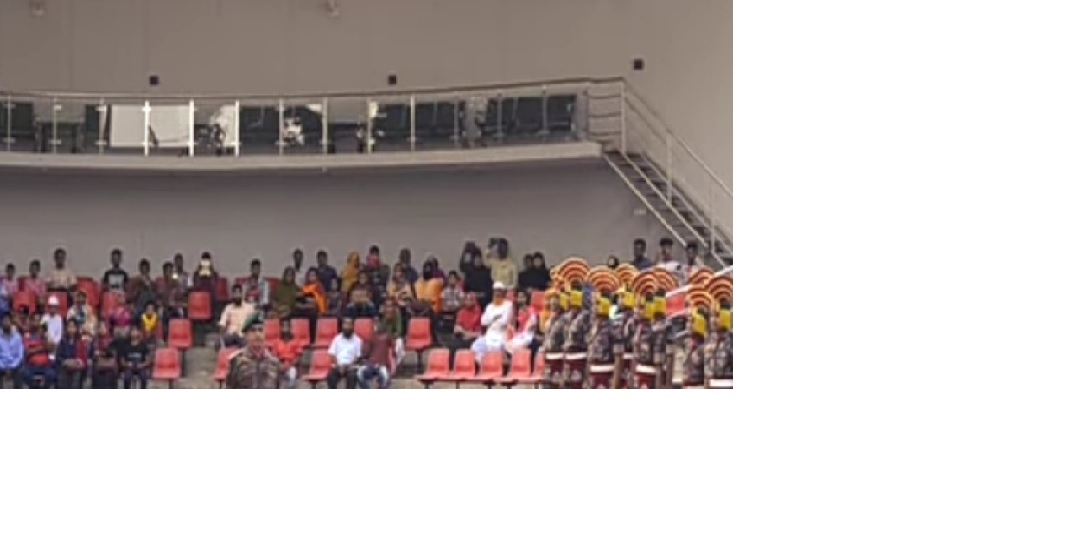 Cross Border Tourism and Excursion through Transport and Facilitation Service between Bangladesh and India
Cross Border Tourism and Excursion between India and Bangladesh
Cross Border Tourism and Excursion through Transport and Facilitation Service between Bangladesh and India
Cross Border Tourism and Excursion between India and Bangladesh

Challenges
The cross-border transport, smart custom clearance and facilitation significantly transformed the lives of people in border areas through tourism, excursion, related local trade and fair utilization of commons among BIBN[1] countries, with special reference to India and Bangladesh. The Comprehensive Framework Agreement between India and Bangladesh, 2010, further confirmed the scopes for tourism, excursion and related local trade as recommended the 6th important area of development in the Second BIMSTEC[2] Ministerial Meeting in Dhaka. Amidst the current geo-political scenario, trans boundary institutional building in tourism and excursion was needed for the fair sharing and utilization of commons and decrease in informal trade. But, there was insufficient awareness among policy makers and stakeholders for understanding the direct, indirect and induced efforts of transport, tourism, excursion and related trades for livelihood in this region.
Towards a Solution
The overall purpose of the initiative was to document on how cross-border transport, smart and quick custom clearance and facilitation can magnify the tourism, excursion, local trade, fair sharing of commons and overall cooperation for trans boundary institutional building along 4156 kilometers. The initiative was contributing to Sustainable Development Goal (SDG) 1 on poverty , SDG 17 on Partnerships for the goals, SDG 9 on Industry Innovation and Infrastructure and SDG 16 on Peace justice and strong institutions respectively. The cross border transport, tourism and excursion through institution building, allied innovative business ideas, existing and proposed multimodal transport corridor projects started magnifying the impacts, yet a full-fledged tourism and excursion market is untapped from either side. As a result, another MOU is signed between Bangladeshi and Indian tour operators in Agartalafor the direct bus service between Agartala and Chittagong via Dhaka on 17th April,2022.The BIMSTEC Master Plan for Transport Connectivity, 2022 also recommended air transport infrastructure for Buddhist tourism. With a new outlook for travel trade, both the countries are enhancing trade and transit corridor in Siliguri[1], Tetulia, Tin Bigha,
etc., working oncross border ecotourism[1] in Sundarban, discussing on free movement regime (FMR) and eVisa.
In terms of the methodology used, a bottom-up approach is adopted with evidence-based advocacies along the long and varied border areas from India’s Northeast to Sundarban in West Bengal, India with diversified scopes. Several field visits and focus group interviews are conducted with the local entrepreneurs in the Integrated Check Points (ICP) and other designated points from both the countries with a semi-structured questionnaire. Petrapole/Benapole ( as referred to image 1), Fulbari (West Bengal), Sutarkandi (Assam), Dawki (Meghalaya, as referred to image 2 and 3), Agartala (Tripura) and Hemnagar in Sundarban (as referred to image 4) respectively. Though almost 10 such integrated and designated points were visited considering the movement of people, the permission of both the countries were granted in six points of access. The respondents of either side were optimistic and raised destination specific issues, challenges, appropriate central-state-border security coordination, smart and easy accessibility and feasible solutions that are essentially different but describe a bilateral model for transboundary tourism, excursion and other allied activities not only between these two countries, but also among other neighbors in South Asia.
The study was effective in increasing the volume of tourism and hospitality businesses with the increasing number of Bangladeshi tourists coming for leisure, business and medical[2]tourism .Bangladeshi tourists had been outnumbering the tourists that visited India from other European and American countries for the past few years. In 2020, citizens from Bangladesh had the highest number of foreign tourists visiting India. Keeping in view the increasing trend of trade and tourism for the last couple of years, India opened another ICP at Kawarpuchiah ( Mizoram) and world’s largest Visa center in 2017 and 2018 respectively. It was an increasing trend of ensuring cross border trade and tourism with committed and mutual political will and various international organizations e.g. World Bank, Asian Development Bank etc. While Bangladesh has contributed to the largest source of foreign tourists arriving to India in 2020 at over 549 thousand visitors, the scope for receiving Indian tourists were many.
Contact Information
Countries involved
Supported by
Implementing Entities
Project Status
Project Period
Primary SDG
Primary SDG Targets
Secondary SDGs
Secondary SDG Targets
Similar Solutions
| NAME OF SOLUTION | Countries | SDG | Project Status | |
|---|---|---|---|---|
A Billion Brains: Smarter Children, Healthier Economies High Level Meeting on South-South Cooperation for Child Rights |
India | 17 - Partnerships for the Goals | Completed | View Details |
Accelerating the Transformational Shift to a Low-Carbon Economy in Mauritius Towards supplying 35 percent of the country’s energy needs with renewables by 2025 |
India | 05 - Gender Equality 09 - Industry, Innovation and Infrastructure 13 - Climate Action | Ongoing | View Details |
ACP Business-friendly Supporting business-friendly and inclusive national and regional policies, and strengthening productive capabilities and value chains |
India | 08 - Decent Work and Economic Growth 17 - Partnerships for the Goals | Ongoing | View Details |
Addressing the Philippine Dairy Sector Challenges Exchanging knowledge between Argentina and the Philippines to improve Philippine local dairy production |
India | 08 - Decent Work and Economic Growth 17 - Partnerships for the Goals | Ongoing | View Details |
Addressing the Transboundary Dimensions of the 2030 Agenda through Regional Economic Cooperation and Integration in Asia and the Pacific Promoting co-deployment of ICT and transport infrastructure corridors in Central Asia region |
India | 09 - Industry, Innovation and Infrastructure 13 - Climate Action 17 - Partnerships for the Goals | Completed | View Details |
